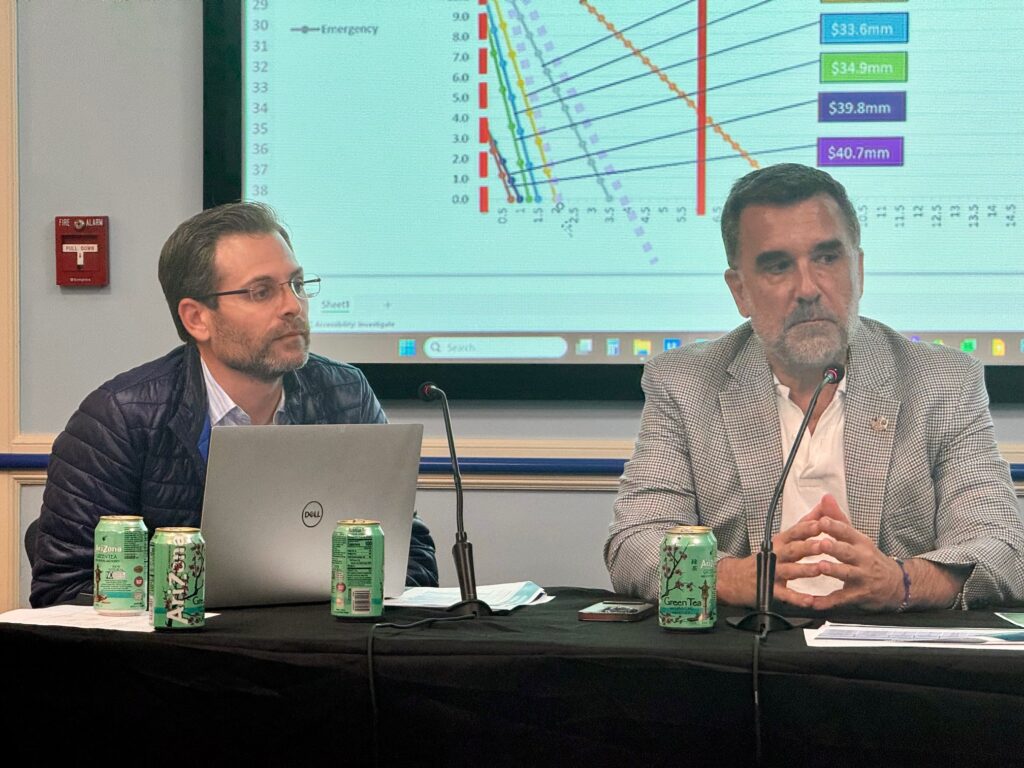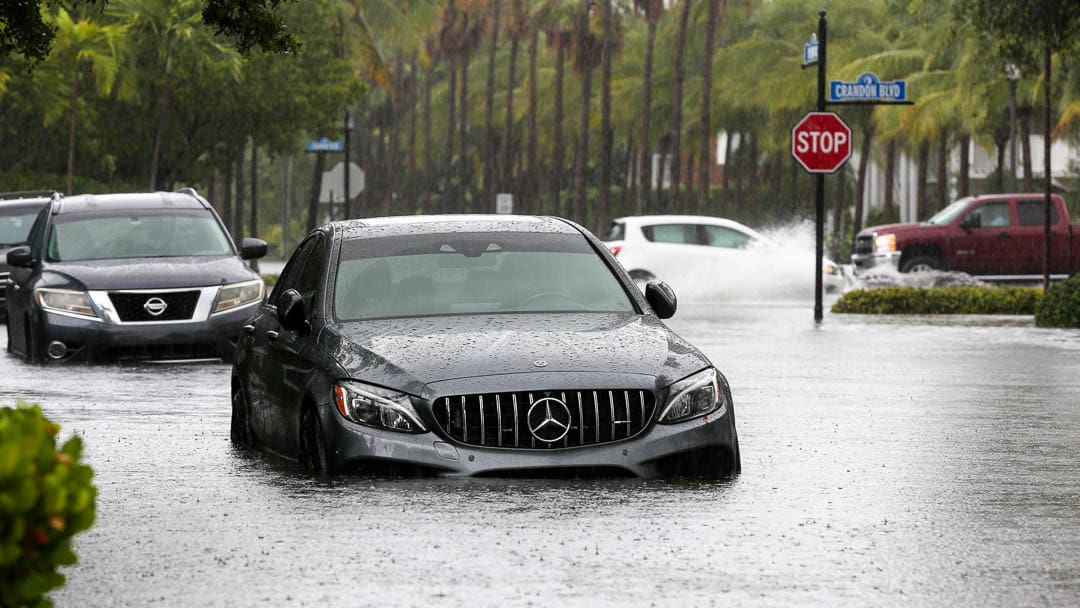Fernando Vazquez, the only council member with experience as an environmental engineer, is warning his colleagues they need to heed to Miami-Dade County and scientific standards when replacing Key Biscayne’s outdated stormwater system.
The Big Dig project is expected to cost hundreds of millions of dollars over the next two decades, but remains mired in an intense debate over climate change predictions and engineering assumptions that will set the scope of an unprecedented civil works project for the island of 15,000 off Miami’s coast.
Vazquez says a proposal to ignore federally-based climate models and their linked engineering would set a dangerous precedent.
“I think it would be a grave mistake on our end,” Vazquez told the Independent. “Us deciding to go in our own direction without a clear understanding of that, I think would not be serving our residents.”
Vazquez made his position clear at the March 20 workshop as the Council tried to come to consensus on the first phase of the Big Dig infrastructure project around the K-8 elementary school. Vazquez said he was so worried by the Council’s direction he would ask the Village attorney to “look into the potential legal repercussions” of Key Biscayne not being compliant with County guidelines.
“Just a bunch of lines”
Council Member Brett Moss was not interested in adhering to county, state or federal guidelines. Authoring his own chart, Moss argued past rainfall rates did not warrant the level of spending sought by the administration.
“I would rather put that money into something that will protect us even stronger,” said Moss, adding the savings could be put to burying utility lines, another portion of the Big Dig project.
But the Village’s chief resilience officer, Roland Samimy, said the Moss graphic could not be considered a valid model and was “just a bunch of straight lines.”
Moss claimed the less ambitious flooding assumption would save $9 million in the first phase, and much more that if his standards were to be followed Village wide.
The savings, however, would be spread out because taxpayers would fund it over 30 years, with 75% coming through a combination of borrowing and tapping the general fund. Viewed over time, Moss’ $9 million saving would be smaller, about $225,000 annually.
By comparison, the Village spends about the same amount for the annual Fourth of July celebration.

Moss questioned whether predictions that storms would become stronger and more frequent justified spending additional taxpayer money.
“I feel that if storms are getting that bad, this system that we’re building is not something that we’re going to be worried about, there’s going to be other things that are much more severe that we’re going to be worried about at that time,” he said.
Council Member Ed London, who supported Moss’s position, wondered out loud if studies showing the Gulfstream might be slowing down would actually mean drought – not more rain – for Key Biscayne.
The Council in January approved a partial work order to complete the design of the flood-prone neighborhood around K-8 elementary school.
But it left out one thing: the size of the pipes and how much water can be removed in a timely fashion from Key Biscayne streets when inudated by a major storm.
The pipe size decision looms large, because it’s s the element that can’t be easily changed later once buried. And while costs can be shaved with smaller and fewer pumps, the debate about climate science and rainfall rates comes down to a practical price tag about pipe size and the amount of water those pipes can move.
What are the guidelines?
Vazquez urged his colleagues to adhere to standards adopted by Miami-Dade County but what those guidelines are remains murky. Calls to multiple agencies could not resolve the recommended rate per hour to plan for.
“They talk about these issues and, and they established regulations and established best management practices,” Vazquez said. “We should really be looking at being consistent.”
At the workshop,Tom McGowan, the senior project manager for AECOM, the design engineer hired by the Village, said the guideline is 2.3 inches per hour.
“So we’re still under designing,” asked Vazquez, who used to work for AECOM.
Samimy on Tuesday said the guidelines suggest adopting a system where roads can be drained in case of a storm that dumps six inches of rain in 24 hours, which the recommended system will do.
“It’s going to be an adaptable system. It will handle a lesser pumping rate now if that’s what we need and be able to go to a higher pumping rate without having to go back and put all sorts of additional infrastructure in the ground,” he said.
Samimy said the Council would be wise to listen to Vazquez. “He’s the voice of reason, because he’s an engineer. He actually knows this stuff,” he said.
Where are the votes?
Vice Mayor Allison McCormick and Council Member Frank Caplan said they would support the expandable system.
Vazquez said he needs to be convinced the Village is heeding County and scientific guidelines before voting yes. London said he would only vote yes for Moss’ proposal.
That leaves a possible 4-3 split, assuming Mayor Joe Rasco and Council Member Oscar Sardiñas follow staff’s recommendation.

But there’s an additional legal wrinkle.
A 5-2 supermajority Council vote is needed to borrow money for the project under the Village Charter, and the future makeup of the Council is uncertain. McCormick and Moss are term-limited from running again and Caplan says he’s undecided.
Williamson said he will present the recommendation for the K-8 portion of the big Dig at the April 9 Council meeting.
Invest in Local News for Your Town. Your Gift is tax-deductible
JOHN PACENTI is the executive editor of the Key Biscayne Independent. John has worked for The Associated Press, the Palm Beach Post, Daily Business Review, and WPTV-TV.




